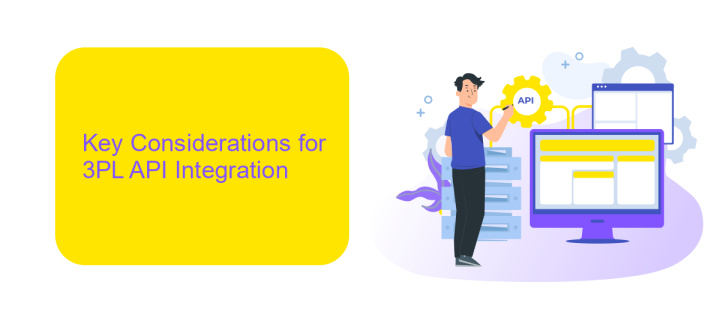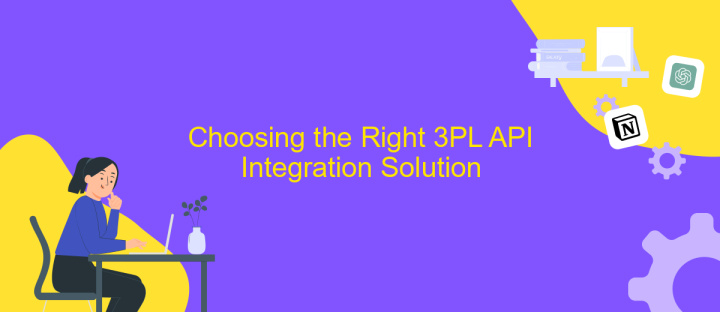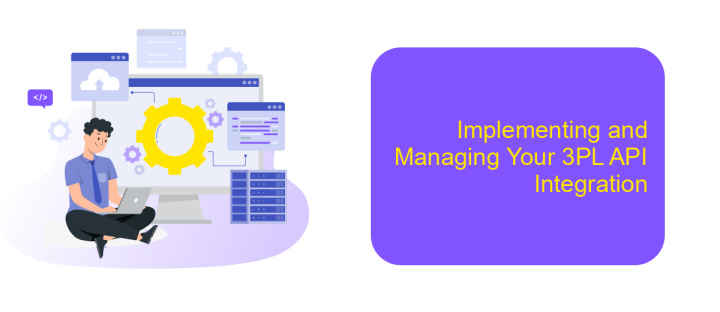3PL API Integration
In today's fast-paced logistics landscape, 3PL API integration stands as a pivotal solution for businesses seeking to streamline their supply chain operations. By seamlessly connecting third-party logistics providers with enterprise systems, companies can enhance efficiency, improve data accuracy, and optimize delivery processes. This article explores the benefits and key considerations of integrating 3PL APIs, offering insights into how businesses can leverage this technology for competitive advantage.
Understanding 3PL API Integration and its Benefits
3PL API integration is a critical component for businesses looking to streamline their logistics and supply chain operations. By connecting third-party logistics providers through APIs, companies can automate and optimize processes such as order fulfillment, inventory management, and shipping. This integration allows for real-time data exchange, which enhances visibility and control over the entire logistics process.
- Improved efficiency through automated processes
- Real-time tracking and updates on shipments
- Enhanced inventory management with accurate data
- Cost savings by reducing manual errors and delays
- Scalability to meet growing business demands
Implementing 3PL API integration brings significant benefits that can transform a company's logistics operations. By leveraging these APIs, businesses can reduce operational costs and improve customer satisfaction through timely deliveries and accurate tracking information. As a result, companies are better equipped to respond to market changes and customer needs, ensuring a competitive edge in the fast-paced world of logistics and supply chain management.
Key Considerations for 3PL API Integration

When integrating a 3PL API, it's crucial to first assess the compatibility of the API with your existing systems. Ensure that the API supports the necessary data formats and protocols to facilitate seamless communication. It's also important to evaluate the scalability of the API to accommodate future business growth and increased transaction volumes. Security should be a top priority; verify that the API has robust authentication and encryption measures to protect sensitive data. Additionally, consider the availability of comprehensive documentation and support resources to assist your development team during the integration process.
Another key consideration is the ease of integration. Utilizing services like ApiX-Drive can streamline the process by offering pre-built connectors and automation tools, reducing the need for extensive coding. This can significantly decrease the time and resources required for integration. Furthermore, ensure that the API provides reliable performance and minimal downtime, as this directly impacts your supply chain efficiency. Lastly, establish clear communication channels with your 3PL provider to address any technical issues promptly and maintain a smooth operation.
Choosing the Right 3PL API Integration Solution

When selecting a 3PL API integration solution, it's crucial to consider several factors that align with your business needs and technological infrastructure. A well-chosen API can streamline operations, enhance efficiency, and improve customer satisfaction. Here are essential steps to guide your decision-making process:
- Evaluate Compatibility: Ensure the API is compatible with your existing systems and can seamlessly integrate with your current software stack.
- Scalability: Choose a solution that can grow with your business, accommodating increased data volume and complexity as your operations expand.
- Security Features: Prioritize APIs that offer robust security measures to protect sensitive data during transmission and storage.
- Support and Documentation: Opt for solutions with comprehensive documentation and reliable customer support to facilitate smooth integration and troubleshooting.
- Cost-effectiveness: Consider the total cost of ownership, including setup fees, maintenance, and any potential hidden costs.
By carefully considering these factors, businesses can select a 3PL API integration solution that not only meets their immediate needs but also supports long-term growth and operational efficiency. Making an informed choice ensures that the integration enhances overall logistics management and contributes to achieving strategic business objectives.
Implementing and Managing Your 3PL API Integration

Successfully implementing a 3PL API integration involves careful planning and execution. Begin by assessing your current logistics processes and identifying specific areas where API integration can enhance efficiency. Collaborate closely with your 3PL provider to understand their API documentation, capabilities, and limitations. Establish clear objectives and timelines to ensure a smooth integration process.
Once the groundwork is laid, initiate the integration by setting up a secure connection between your systems and the 3PL provider. This often involves configuring authentication protocols and ensuring data compatibility. Thorough testing is crucial to identify and resolve any potential issues before going live. Regularly monitor the integration to maintain optimal performance and address any arising challenges promptly.
- Define clear objectives and timelines.
- Collaborate with your 3PL provider for seamless integration.
- Ensure secure data exchange and compatibility.
- Conduct thorough testing before launch.
- Monitor and manage the integration continuously.
Managing your 3PL API integration requires ongoing attention and adjustments. Regularly review performance metrics to identify areas for improvement. Stay updated with any API changes from your 3PL provider to avoid disruptions. By maintaining open communication and adapting to evolving needs, you can leverage your 3PL API integration to its fullest potential.


Best Practices and Future Trends in 3PL API Integration
When integrating 3PL APIs, it is crucial to adhere to best practices to ensure seamless operations. Prioritize using RESTful APIs due to their scalability and ease of use. Implement robust authentication methods such as OAuth 2.0 to protect sensitive data. Thoroughly document your API integration process to facilitate smooth communication between teams and reduce troubleshooting time. Regularly test and monitor API performance to identify and resolve issues promptly. Additionally, consider utilizing integration platforms like ApiX-Drive, which can simplify the setup process and enhance connectivity between disparate systems.
Looking towards future trends, the integration of AI and machine learning into 3PL APIs is set to revolutionize logistics operations by providing predictive analytics and smarter decision-making capabilities. The growing adoption of blockchain technology promises to enhance transparency and traceability in supply chains. Furthermore, as IoT devices become more prevalent, 3PL API integrations will increasingly support real-time data exchange, enabling more efficient and responsive logistics management. Staying informed about these trends will help businesses maintain a competitive edge and optimize their supply chain strategies.
FAQ
What is 3PL API Integration and why is it important?
How can I integrate my e-commerce platform with a 3PL provider?
What are the common challenges faced during 3PL API Integration?
How does API integration improve order fulfillment?
What should I consider when selecting an API integration tool for 3PL services?
Do you want to achieve your goals in business, career and life faster and better? Do it with ApiX-Drive – a tool that will remove a significant part of the routine from workflows and free up additional time to achieve your goals. Test the capabilities of Apix-Drive for free – see for yourself the effectiveness of the tool.

